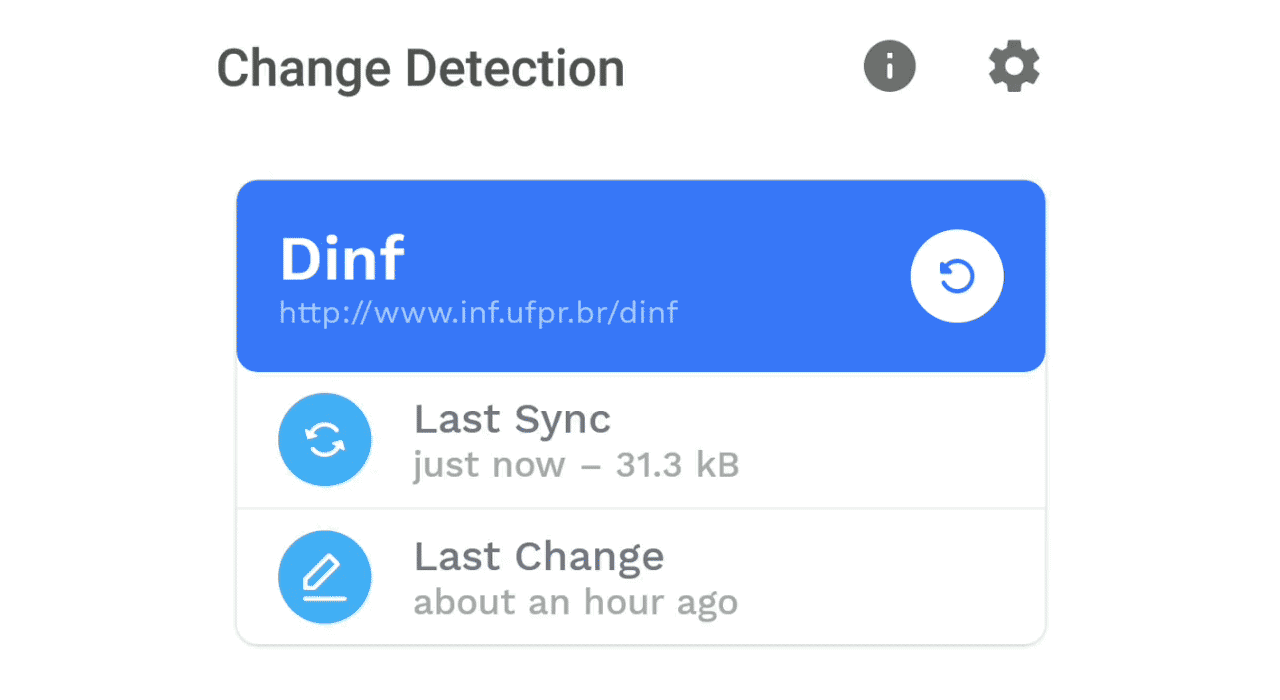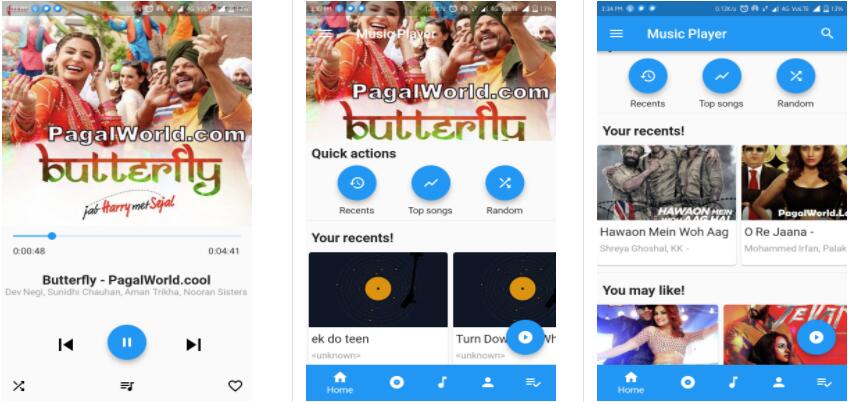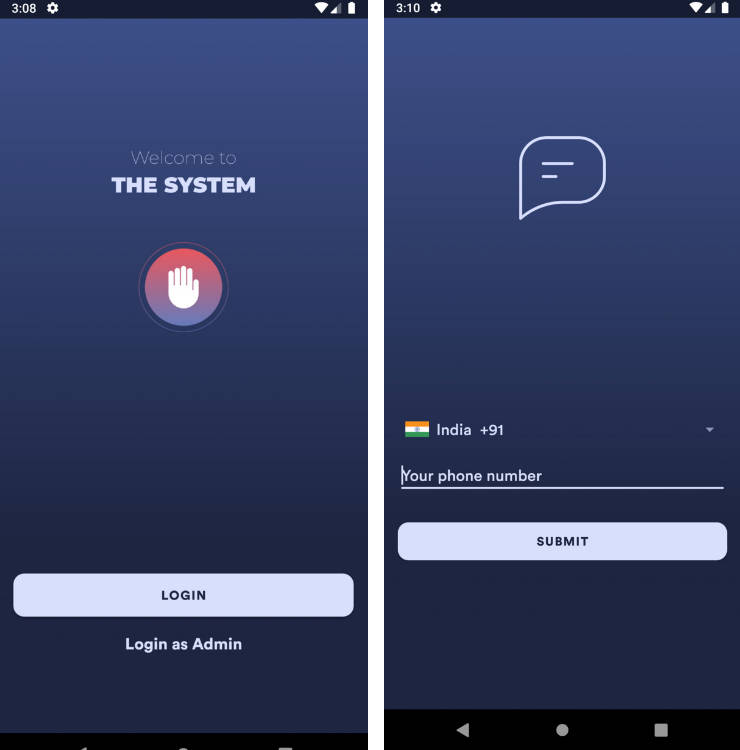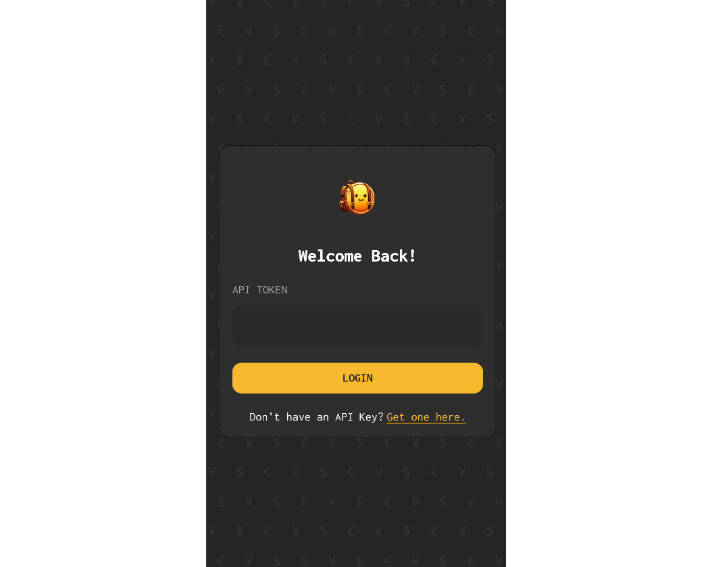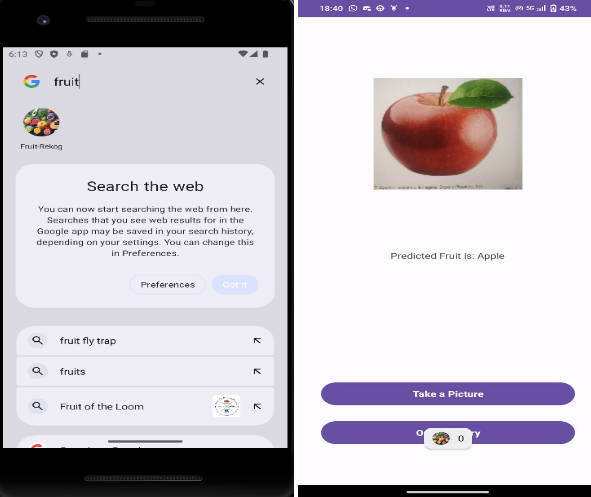Change Detection
This app tracks changes on websites you otherwise would visit frequently to see if there is something new.
Use cases:
- Teacher says grades will be published "soon", but no one knows what "soon" means and you are tired of reloading.
- You are working with a server and wants to know the result from a request, periodically.
- You are working with a server and wants to know if the server is working as intended, or if the release has happened successfully.
This app also showcases all the Android Architecture Components working together: Room, ViewModels, LiveData, Paging, WorkManager and Navigation.

Screenshots
| Main Screen | Detail | Settings |
|---|---|---|
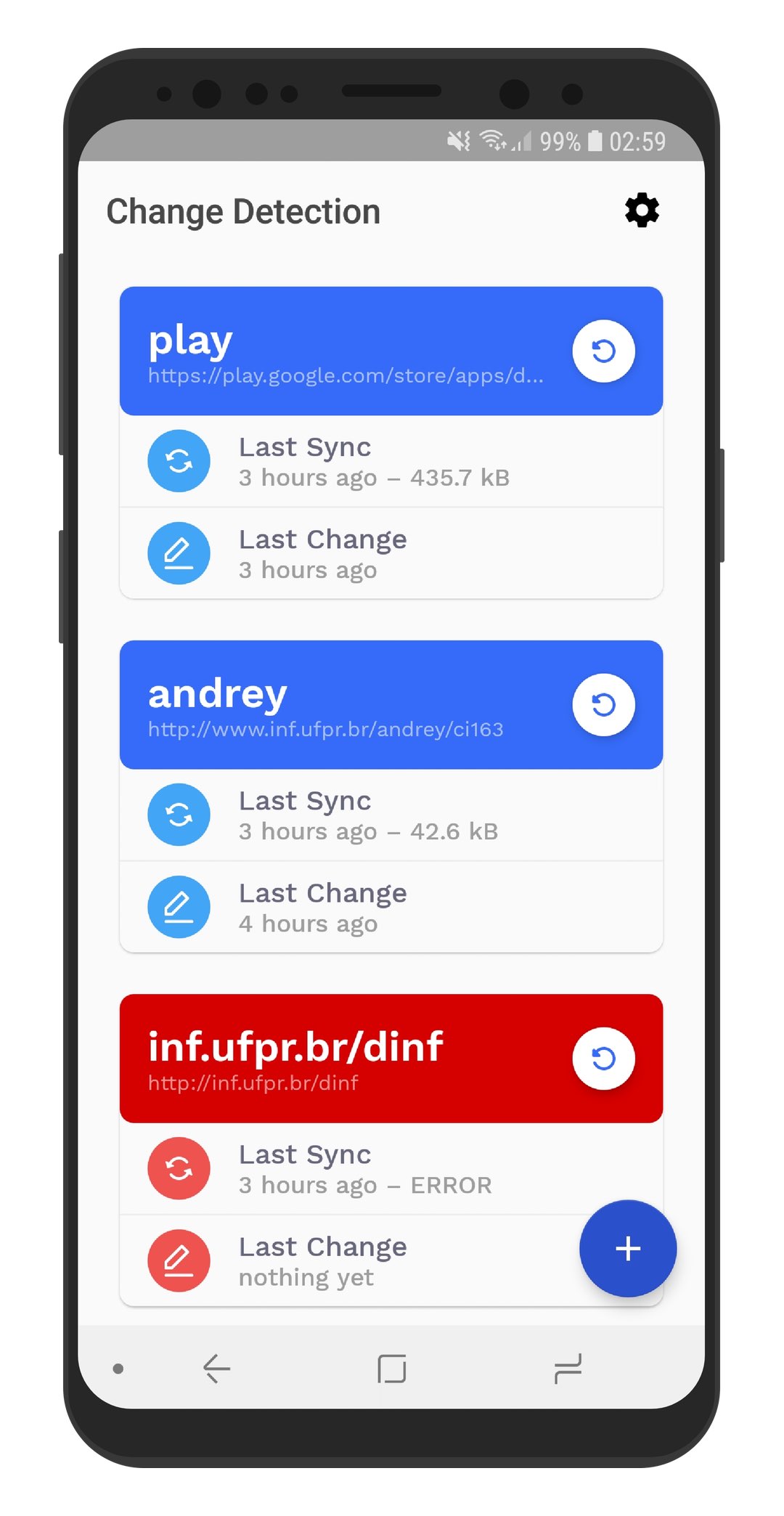 |
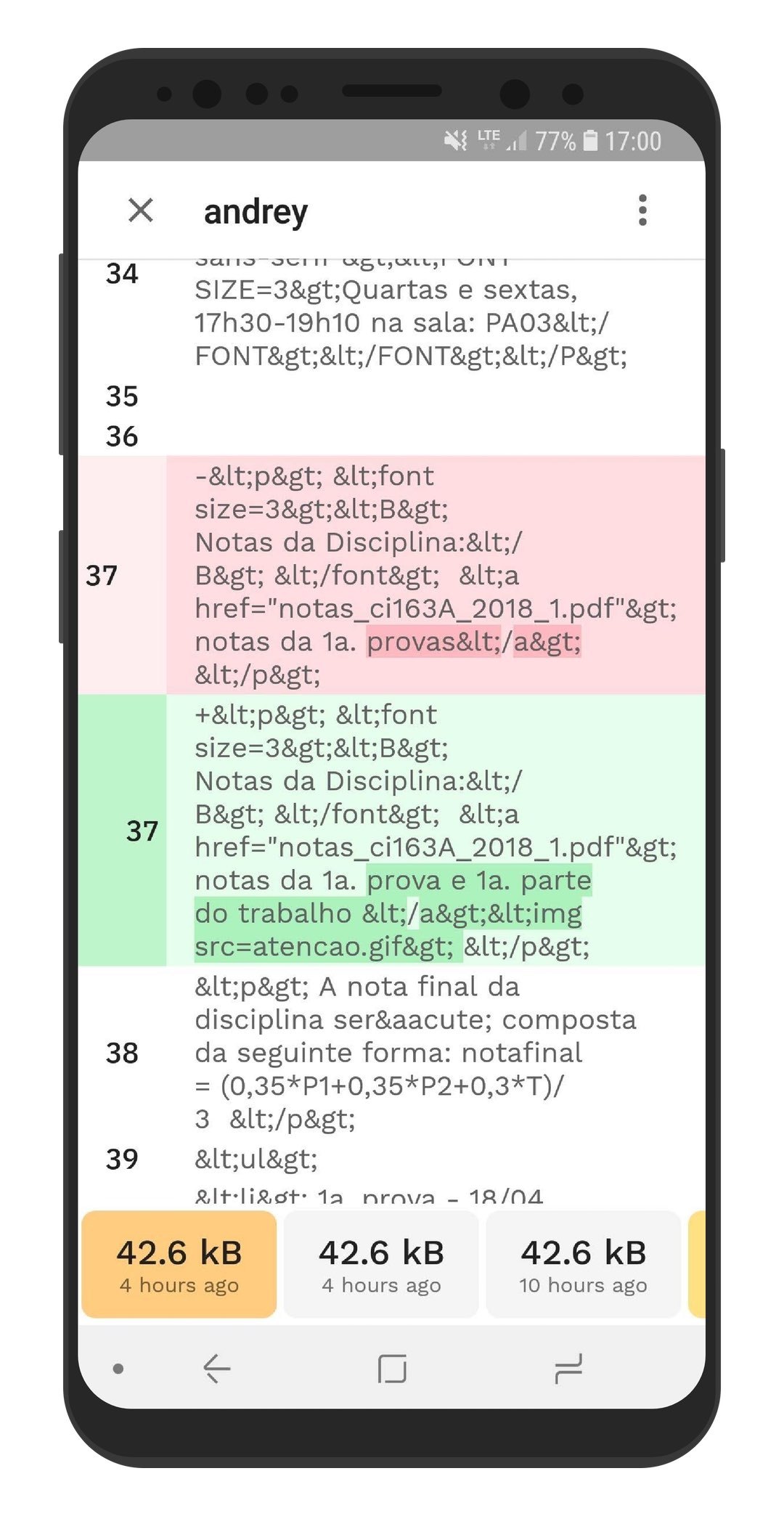 |
 |
Introduction
Features
This app contains four screens:
- A list of websites that are currently being tracked.
- A detail view, that allows the user to compare the current website version with previous versions.
- A settings view, that allows user to toggle auto-sync on/off and configure what is required for a sync to occur.
- An about screen, with contact information.
For clarity, unless otherwise noted, I'll ignore the settings and about on most of this README; I will pretend the app has two views, the main list and the details view.
Settings makes use of Shared Preferences, there is nothing special.
Presentation layer
The presentation layer consists of the following components:
- A main activity that handles navigation.
- A fragment to display the list of websites currently tracked.
- A fragment to display the details (history of changes) from the selected website.
The app uses a Model-View-ViewModel (MVVM) architecture for the presentation layer. Each of the fragments corresponds to a MVVM View.
The View and ViewModel communicate using LiveData and general good principles.
Data layer
The database is created using Room and it has two entities: a Site and a Diff that generate corresponding SQLite tables at runtime.
There is a one to many relationshiop between them. The id from Site is a foreign key on Diff.
To let other components know when the data has finished populating, the ViewModel exposes a LiveData object via callbacks using interfaces (inspired from this todo app).
This could be extended to work with server and sync.
Diff Process
This app makes extensive use from java-diff-utils.
In fact, part of the library was converted to Kotlin and is now working perfectly on Java 6 (the original library makes use of Streams, which is only supported on Java 8).
All the diff process is made using Myer's diff algorithm, and the result, for performance reasons, is put on a RecyclerView.
When the diff process happens, the app will remove style, link and script tags from html to avoid pages that generate them at every request.
Example: pages that make use of Google Analytics and pages that were made in WordPress.
If even after stripping these there is still a change detected, the app will show a toast (if visible) or a notification (if in background).

How each Architecture Component is used
-
Navigation: this is a single activity app. All fragment transactions (except one) are made using Navigation library.
-
WorkManager: responsible for automatically syncing when the app is in background.
There are four constraints: battery not low, device on idle state (API 23+), device charging and wifi on.
Wifi is currently not a constraint from WorkManager, so I implemented it myself to work together. -
Paging: on details fragment. As time goes, it is possible for a website to receive hundreds of updates.
To avoid OOM error once and for all, Paging was implemented. To make things even smarter, Paging only retrieves the Diff metadata: size, timestamp and id. The string, which can be heavy, is retrieved later. This way the app avoids from having a CursorAdapter with limited Window size having to deal with huge strings many times per second. -
LiveData/ViewModel: written above.
-
Room: written above.
Third Party Libraries Used
- Android-Iconics deal with icons without suffering.
- Architecture Components all of them, as stated above.
- Groupie for making RecyclerViews as simple as possible.
- java-diff-utils generate the difference between two strings.
- Logger logs that are useful and disabled on release.
- material-about-library create an about page without suffering.
- Material Dialogs show dialogs in a simple and easy way.
- Notify create notifications without effort.
- ok-http fetch the webpages.
- Stetho debug the database easily.
- ThreeTenABP for dealing with time in a Java 8 way.
- timeago makes it easy display relative dates (i.e. 1 day ago).
- Toasty show toasts in a colorful way.
